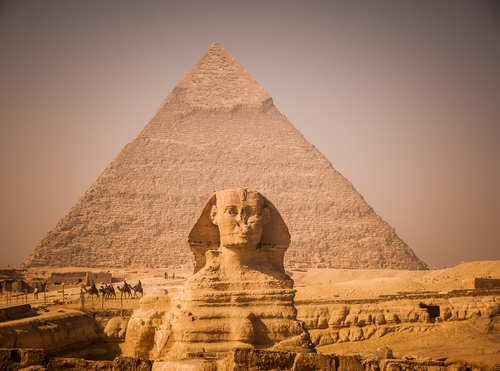The Mummy Returns: Unearthing ancient arthritic disease
M3 Global Newsdesk Nov 02, 2017

A pharaoh's secrets
Modern imaging techniques have confirmed the presence of rheumatoid arthritis and diffuse idiopathic skeletal hyperostosis (DISH) in ancient mummified remains.
Who does a pharaoh talk to when he’s sad? His mummy.
All mummy jokes aside, over the past decade or so, the mummified remains of ancient people and pharaohs have revealed secrets about medical diseases and conditions that still exist today, including rheumatoid arthritis and diffuse idiopathic skeletal hyperostosis (DISH). And although the findings are not recent, they are perhaps—during this Halloween season—worth reviewing, with the hope of perhaps further ‘unravelling’ their mysteries.
The ‘Braids Lady’
In 2002, researchers from the University of Pisa, Italy, published their findings of rheumatoid arthritis in the “Braids Lady” of Arezzo in Clinical and Experimental Rheumatology. The “Braids Lady” was the nickname of a mummified female body from the 16th century.To explore a diagnosis of rheumatoid arthritis, researchers performed imaging tests on the “Braids Lady,” including normal x-rays, mammography, total body CT and high-resolution CT, as well as stereomicroscopy and histology.
Researchers found large erosions of the metacarpophalangeal joints of the third and fourth fingers, volar metacarpophalangeal subluxation of the third and fourth fingers, and lateral deviation of all fingers. Minute and marginal erosions of the bones were evident on the carpus, and the bases of the first phalanges were mildly flared. Overlapped fibular deflection was evident in her toes and joint subluxation seen on CT. Her body showed no involvement of sacroiliac articulation.
Thus, they concluded that the “Braids Lady”—who died nearly 200 years before the first clinical diagnosis of RA was made by Landré Beauvais in the early 1800s—did indeed have rheumatoid arthritis.
Genetically speaking
A well-established association between rheumatoid arthritis and some of the alleles of the HLA-DRB1 locus exists, including DRBI*0101, CRBI*0401, DRB1*0404, DRB1*0405, CRB1*1401, and to a lesser degree DRB1*1001. Indeed, more than 90% of individuals diagnosed with rheumatoid arthritis possess some alleles of the DRB1*01 or DRB1*04 gene families.1
Researchers of another study, conducted in 2006 on the 50–55-year-old “Braids Lady,” sought to define the HLA-DRB genotype and establish the presence or absence of rheumatoid arthritis susceptibility genes.Using DNA extracted from the mummy, they performed molecular analysis, as well as two different HLA typing techniques, polymerase chain reaction-sequence-specific oligonucleotides (PCR-SSO) and PCR-sequence-specific primers (PCR-SSP), to identify HLA-DRB alleles.
According to their PCR-SSO analysis, the presence of the DRB1*0101 and DRB1*1101 alleles was confirmed (corresponding to DR1 and DR11 serotypes, respectively), along with a positivity for the DRB3 gene (phenotypically DR52). PCR-SSP testing confirmed the assignment of the allele DRB1*0101.“Although the possession of rheumatoid arthritis risk-factor genes cannot be considered a diagnostic marker, the positive result for DRB1*0101 and the presence of rheumatoid arthritis features in the Italian mummy support the idea that this disease was present in the Old World since at least the mid-16th century,” concluded these authors.
Pharaoh misdiagnosis
In 2014, researchers concluded that several pharaohs who ruled three millennia ago suffered from DISH rather than ankylosing spondylitis, as previously concluded from x-rays. They published their results in Arthritis & Rheumatology.
Previously, these three pharaohs—Amenhotep II, Ramesses II, and Ramesses’ son Merenptah—had been studied via x-rays taken in the 1980s. This more recent team of researchers—led by Dr. Sahar Saleem, Kasr Al Ainy Faculty of Medicine in Cairo, Egypt, and Dr. Zahi Hawass, Egyptologist and former head of the Egyptian Supreme Council of Antiquities—performed detailed CT scans on 13 royal Egyptian mummies (including the three pharaohs studied previously) who ruled between 1492–1153 BC, searching for signs of arthritis.
They found no evidence supporting joint erosion or fusion in the sacroiliac joints, or fusion of the facet joints in the spine. Rather, distinctive patterns of ossification were seen along the vertebral bodies, indicating a diagnosis of DISH in the mummified remains of four pharaohs: Amenhotep II of the 18th dynasty, Ramesses II, Merenptah, and Ramesses III from the 19th through early 20th dynasties.DISH can appear to be similar to ankylosing spondylitis, but is classified as a degenerative, rather than an inflammatory type of arthritis seen in people aged 60 years and older.Their findings corroborate archeologic literature, in which it was indicated that these pharaohs led active and relatively long lives, with an average age of death of 63 years.
The mummies of Ancient Egypt offer a wealth of information regarding the history of disease. In studying these ancient remains we may be able to uncover the pathway of diseases—like ankylosing spondylitis or DISH—and how they might impact modern populations,” these authors concluded.
This story is part of our Global Content Initiative, where we will feature selected stories from our Global network that we feel would be most useful and informative to our Doctor members
-
Exclusive Write-ups & Webinars by KOLs
-
Daily Quiz by specialty
-
Paid Market Research Surveys
-
Case discussions, News & Journals' summaries